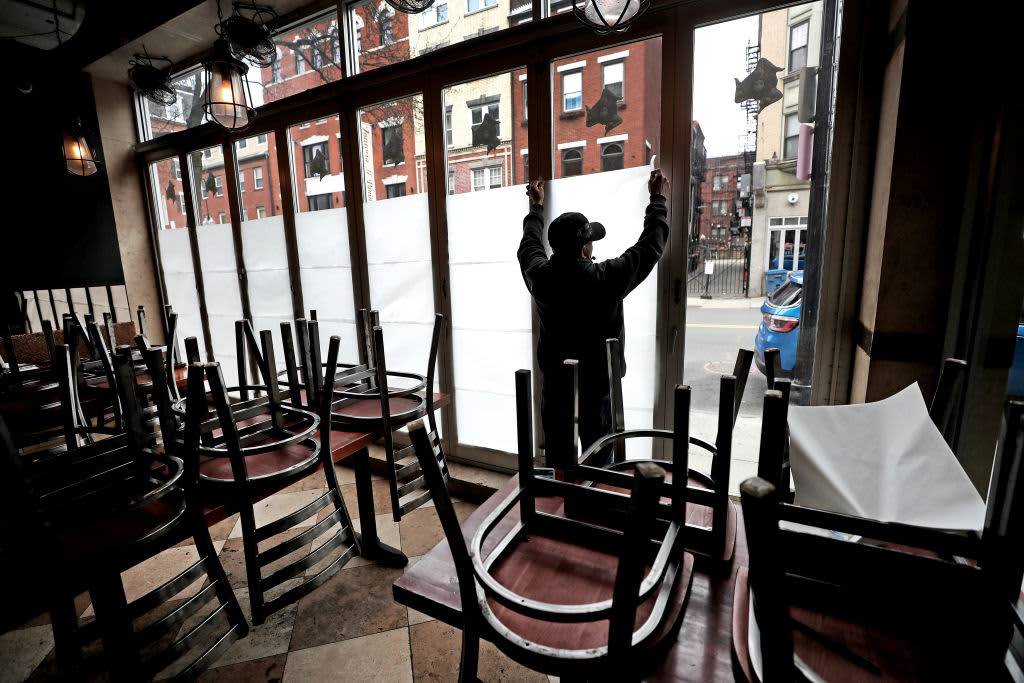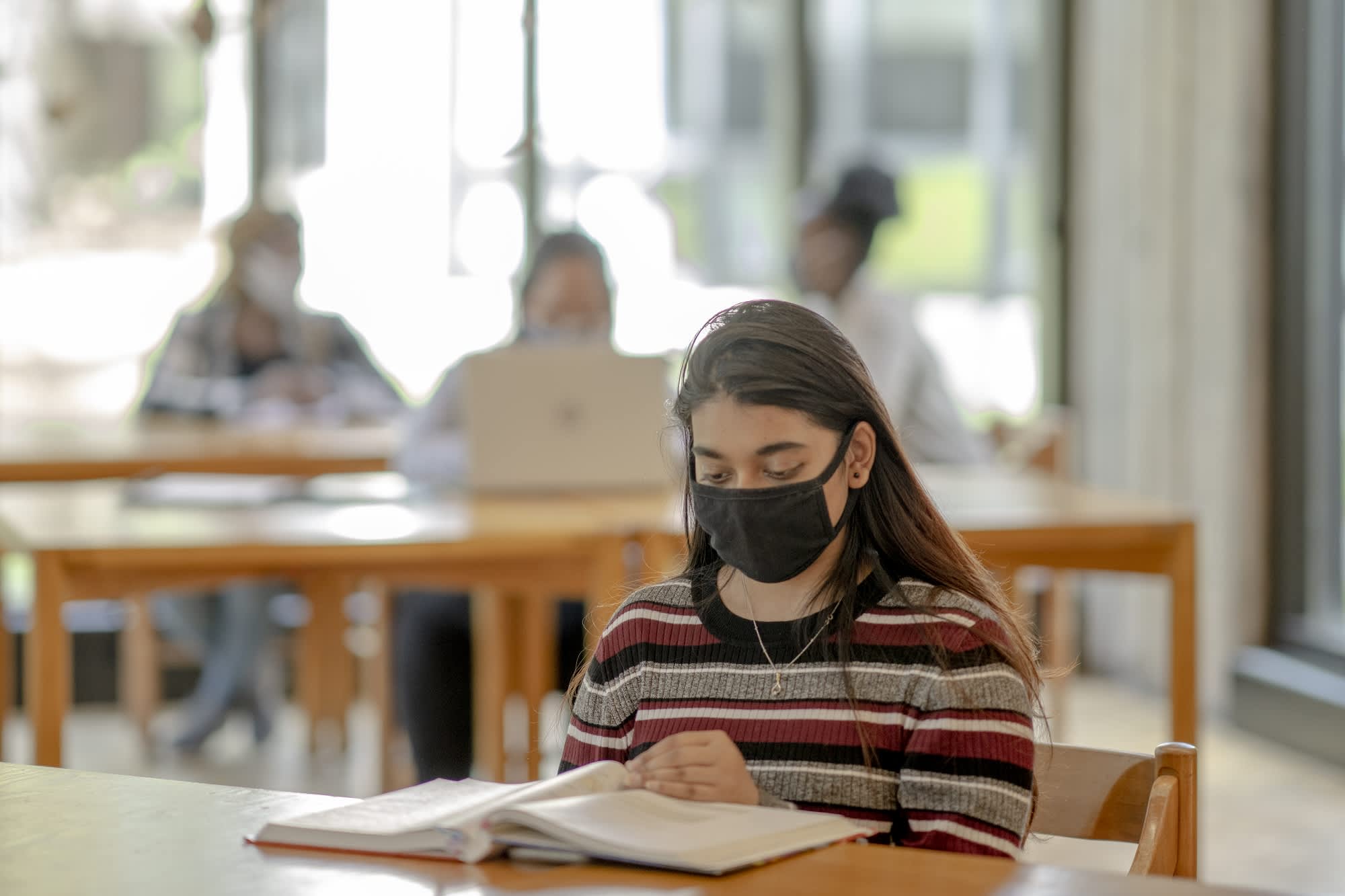A total of 190 cities and towns in Massachusetts, including Boston, are now considered at the highest risk for transmitting coronavirus, an increase of two since last week.
The data, released on New Year's Eve by the Massachusetts Department of Public Health, depicts the third consecutive week that more than half of the state's communities were in the red zone. The same day, the state announced a record number of new COVID-19 cases.
The weekly town-by-town report includes a breakdown of the total number of coronavirus cases in each Massachusetts city and town, transmission rates, data on clusters and more. Last week, the state also launched a new vaccine dashboard.
The numbers have been increasing steadily for weeks, as have coronavirus case totals, amid a new surge that has intensive care beds in short supply at some hospitals. (See this week's full red zone list below.)
See the Town-by-Town Mass. Coronavirus Risk Data
The following 190 communities are in the highest risk level as of Thursday: Abington, Acushnet, Agawam, Amesbury, Andover, Ashburnham, Athol, Attleboro, Auburn, Avon, Ayer, Barnstable, Bellingham, Berkley, Beverly, Billerica, Blackstone, Boston, Boxford, Boylston, Braintree, Bridgewater, Brockton, Brookfield, Burlington, Canton, Carver, Charlton, Chelmsford, Chelsea, Chicopee, Clinton, Cohasset, Danvers, Dartmouth, Dedham, Dennis, Dighton, Douglas, Dover, Dracut, Dudley, East Bridgewater, East Longmeadow, Easton, Everett, Fairhaven, Fall River, Fitchburg, Foxborough, Framingham, Franklin, Freetown, Gardner, Georgetown, Grafton, Granby, Groveland, Hadley, Halifax, Hamilton, Hanover, Hanson, Haverhill, Holbrook, Holden, Holliston, Holyoke, Hopedale, Hudson, Hull, Ipswich, Kingston, Lakeville, Lancaster, Lawrence, Lee, Leicester, Leominster, Littleton, Longmeadow, Lowell, Ludlow, Lunenburg, Lynn, Lynnfield, Malden, Manchester, Mansfield, Marlborough, Marshfield, Mashpee, Mattapoisett, Melrose, Merrimac, Methuen, Middleborough, Middleton, Milford, Millbury, Millis, Milton, Monson, Montague, Nantucket, New Bedford, Newbury, Norfolk, North Andover, North Attleborough, North Brookfield, North Reading, Norton, Norwell, Norwood, Orange, Oxford, Palmer, Paxton, Peabody, Pembroke, Pepperell, Plainville, Plymouth, Quincy, Randolph, Raynham, Reading, Rehoboth, Revere, Rochester, Rockland, Rockport, Rowley, Rutland, Salem, Salisbury, Saugus, Scituate, Seekonk, Shirley, Shrewsbury, Somerset, South Hadley, Southampton, Southborough, Southbridge, Southwick, Spencer, Springfield, Sterling, Stoneham, Stoughton, Sturbridge, Sutton, Swampscott, Swansea, Taunton, Templeton, Tewksbury, Topsfield, Townsend, Tyngsborough, Upton, Uxbridge, Wakefield, Walpole, Waltham, Ware, Wareham, Webster, Wenham, West Boylston, West Bridgewater, West Brookfield, West Springfield, Westfield, Westford, Westminster, Westport, Weymouth, Whitman, Wilbraham, Wilmington, Winchendon, Winthrop, Woburn, Worcester, Wrentham and Yarmouth.
The state itself is in red as well, for the fourth straight week.
Of those communities in red, 17 are newly in red on the list: Boston, Canton, Dennis, Dover, Foxborough, Hopedale, Ipswich, Kingston, Mashpee, Norwell, Rockport, Scituate, South Hadley, Upton, Ware, Wenham and Wrentham.
And 15 communities dropped out of red: Ashland, Brewster, Carlisle, Deerfield, Edgartown, Gloucester, Hingham, Marion, Medway, Mendon, Newburyport, Northborough, Oak Bluffs, Tisbury and Westborough.
To qualify for the red, high-risk category under the new metrics, communities with populations under 10,000 must have more than 25 cases. For mid-size communities of between 10,000 and 50,000 people, they must have an average of more than 10 cases per 100,000 people and a positive test rate of more than 5%. And for larger communities of greater than 50,000 people, they must have more than 10 cases per 100,000 people and a positive test rate of more than 4%.
Previously, the state used the number of cases detected on average each day over two weeks to determine if Massachusetts' communities are at high risk for coronavirus transmission. The new list factors in population size and positive test rate.
State health officials have identified 20,555 new coronavirus clusters between Nov. 29 and Dec. 26, each accounting for an average of 2.67 COVID-19 cases. That's 1,758 more new clusters than were identified in the previous report, with data from Nov. 22-Dec. 19.
Read this week's full report here, with data on communities' percent positivity, county- and state-level data and more.
The Department of Public Health is no longer including a map of the community-level risk in the weekly report. An official told NBC10 Boston that the map is no longer seen as being as helpful as it once was, now that coronavirus cases are being reported in most communities.
Changes to Massachusetts' Hot Spot Map
Massachusetts has changed its coronavirus metrics for the weekly report over time, including three significant revamps in a recent three-week span.
The most recent changes, last month, produced a major shift: knocking the number of communities in the red zone from 121 to 16 as what defined a high-risk community changed, though the numbers have grown as the weeks passed. Officials said the adjustment brought Massachusetts more in line with risk levels in other states.
That week's report also dropped the map that displayed the town-by-town coronavirus data. It showed where in the state communities were at high, moderate or low risk of transmission, but officials said it was no longer very informative.
In the weeks before that, officials added information on COVID-19 clusters, both on where major clusters have been identified -- they're listed in the report with an asterisk -- and on trends among clusters.
The color-coded town-by-town data was introduced in August, and the Baker administration announced that the state would focus its strongest COVID-mitigation efforts on towns in the red category. Communities can only move to Step 2 of Phase 3 of Massachusetts' reopening plan, announced in late September, if they are not consistently in the red.
Before the introduction of that data, the standard for measuring hot spots had been the positive COVID test rate over the preceding 14 days. The Department of Public Health's weekly report still includes that information, along with other metrics like how many tests are being conducted locally and how many cases have been reported locally.
Some of Massachusetts' smaller towns had taken issue with having their risk assessed based on cases per capita alone. They said that, when a town only had a few thousand people, an outbreak in just one household could send it into red under the criteria at the time: 8 cases of COVID-19 per 100,000 residents.
Get top local stories in Boston delivered to you every morning. Sign up for NBC Boston's News Headlines newsletter.
New Data on Vaccines in Mass.
So far, 78,643 people have gotten the first dose of the vaccine, according to the dashboard. The two vaccines that have been approved so far, Pfizer's and Moderna's, both require two doses to be administered several weeks apart, but it's too early for second doses to have been administered yet.
The dashboard shows that 285,050 vaccine doses in all have been delivered to Massachusetts so far, more than half of them from Cambridge-based Moderna. And the document breaks down by county where the vaccines have been delivered.
Also included in the dashboard are breakdowns of the age and race/ethnicity of people who have been vaccinated and the kinds of providers that gave the vaccines out.
"The amount and type of data included on the dashboard will grow and be refined over time as vaccinations continue in additional groups and populations and additional vaccine products are approved and distributed," read a statement announcing the dashboard's release last week.
Vaccinations began in Massachusetts three weeks ago. See the Baker administration's plan for rolling out the vaccine here.
See Thursday's full Department of Public Health report here.



